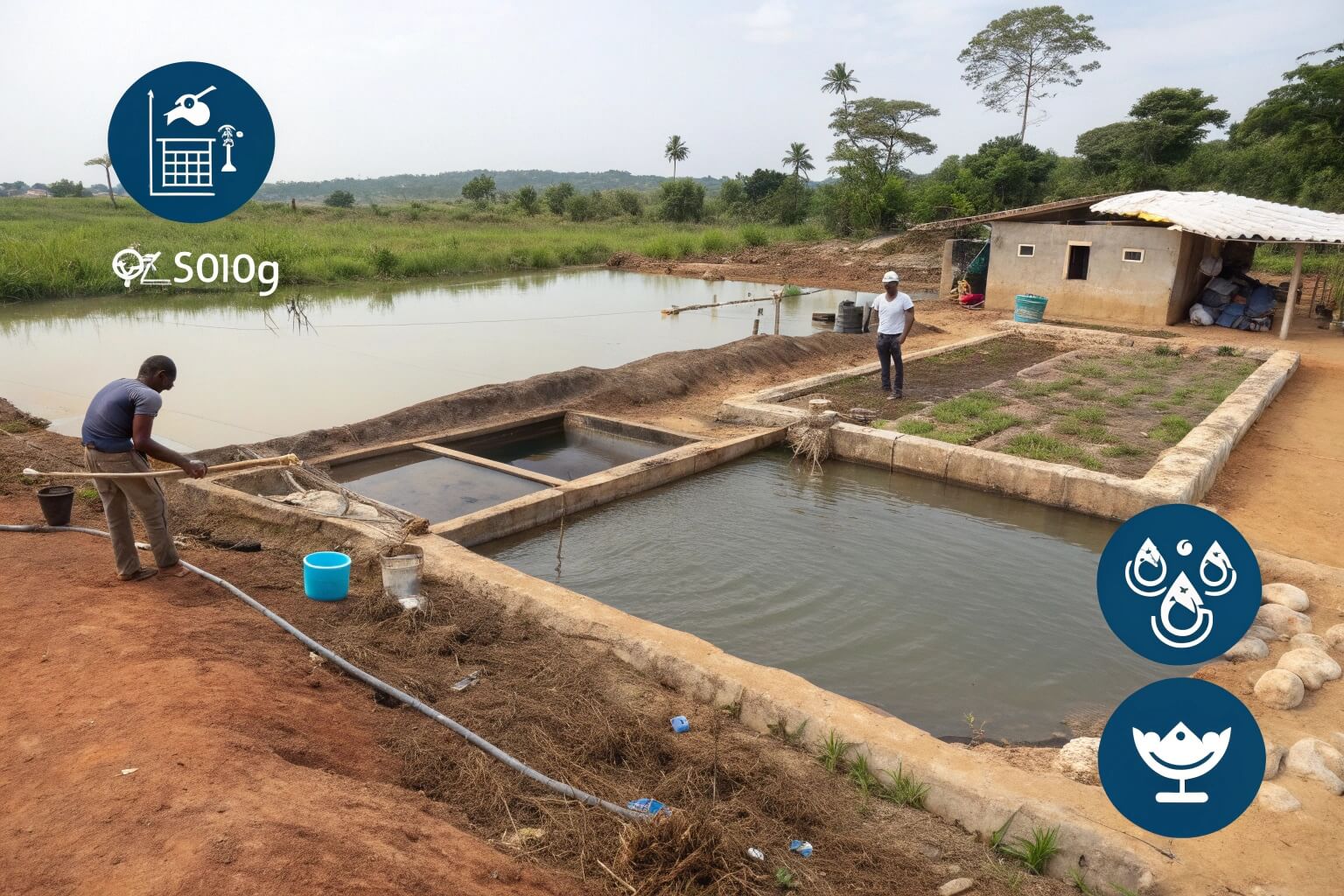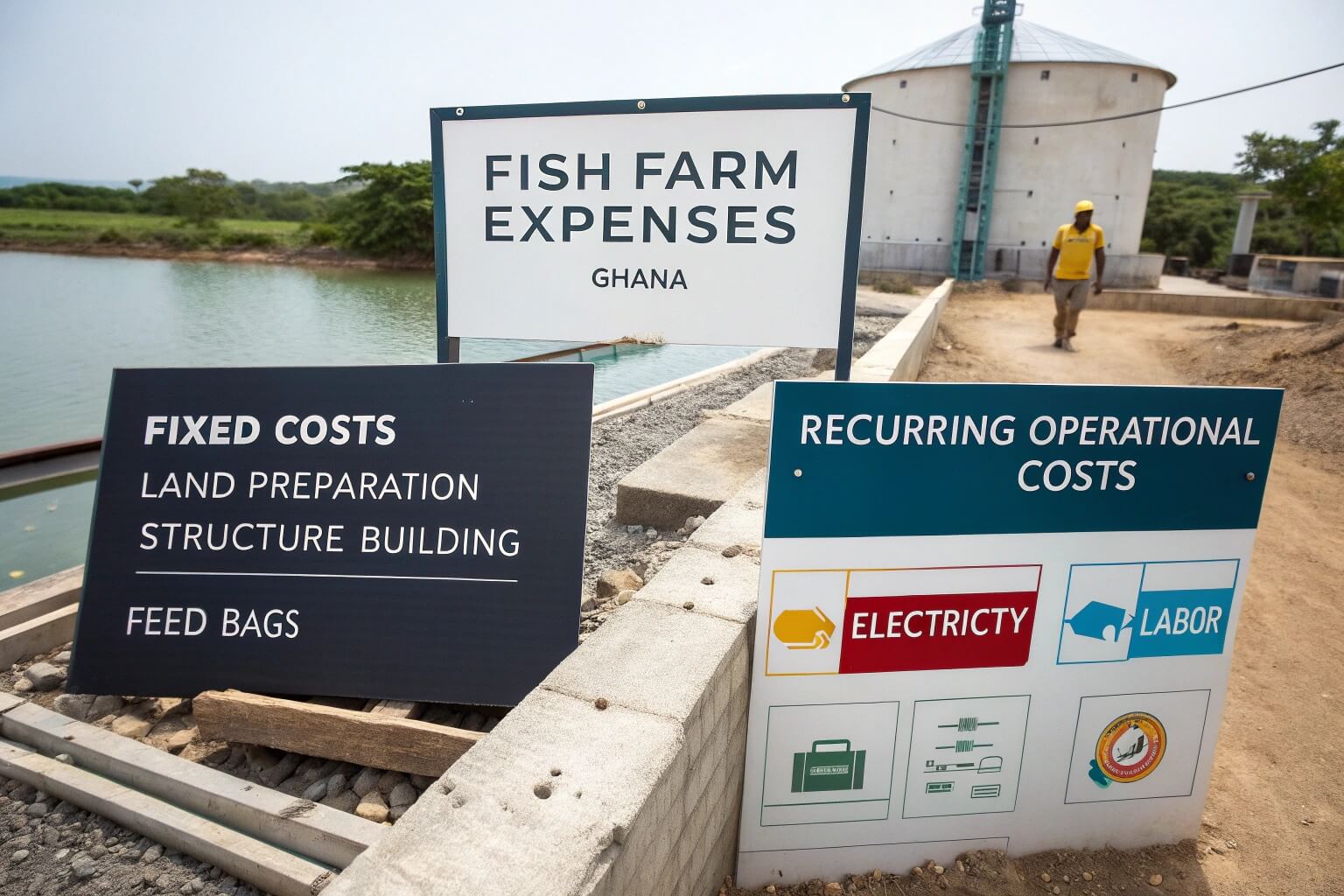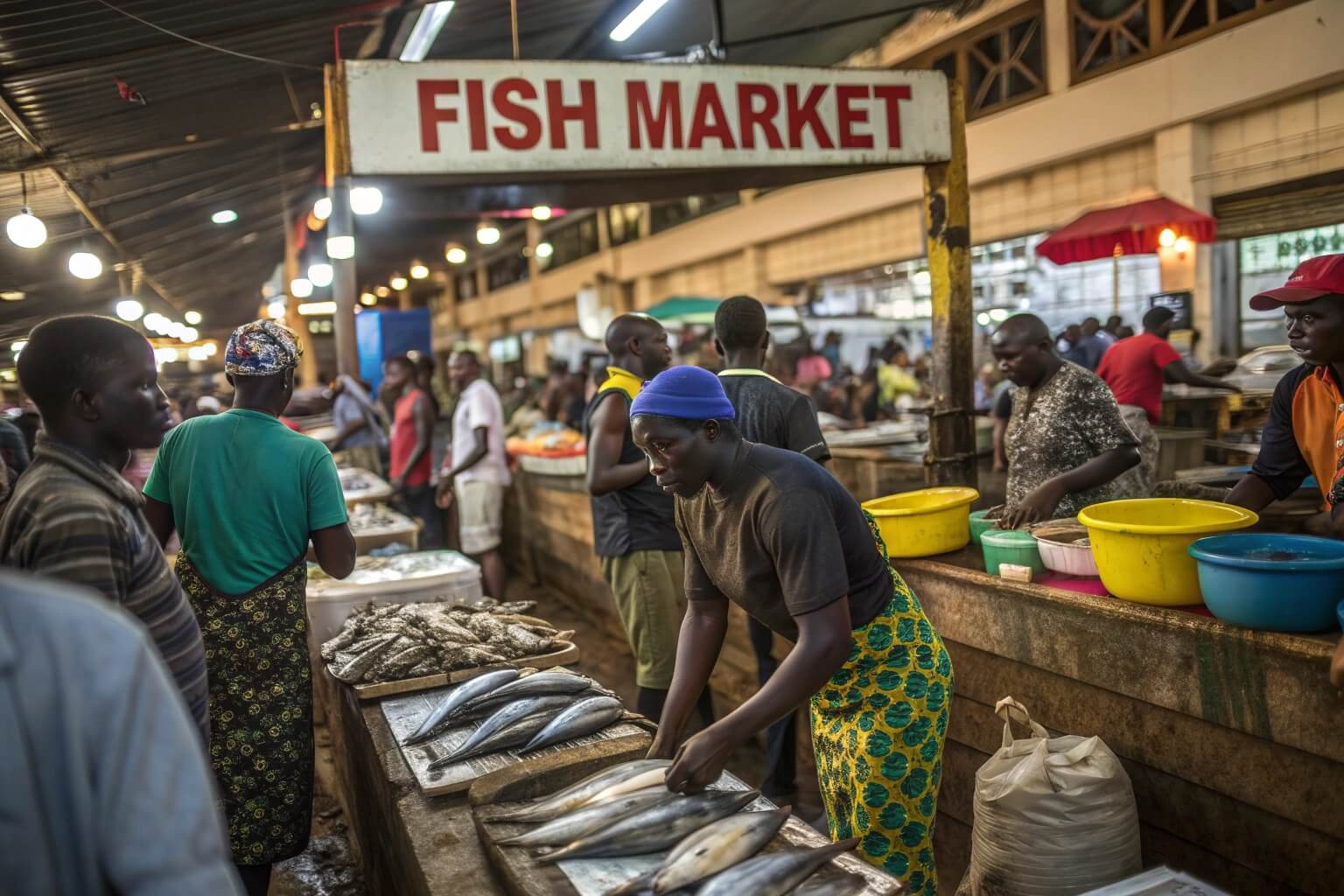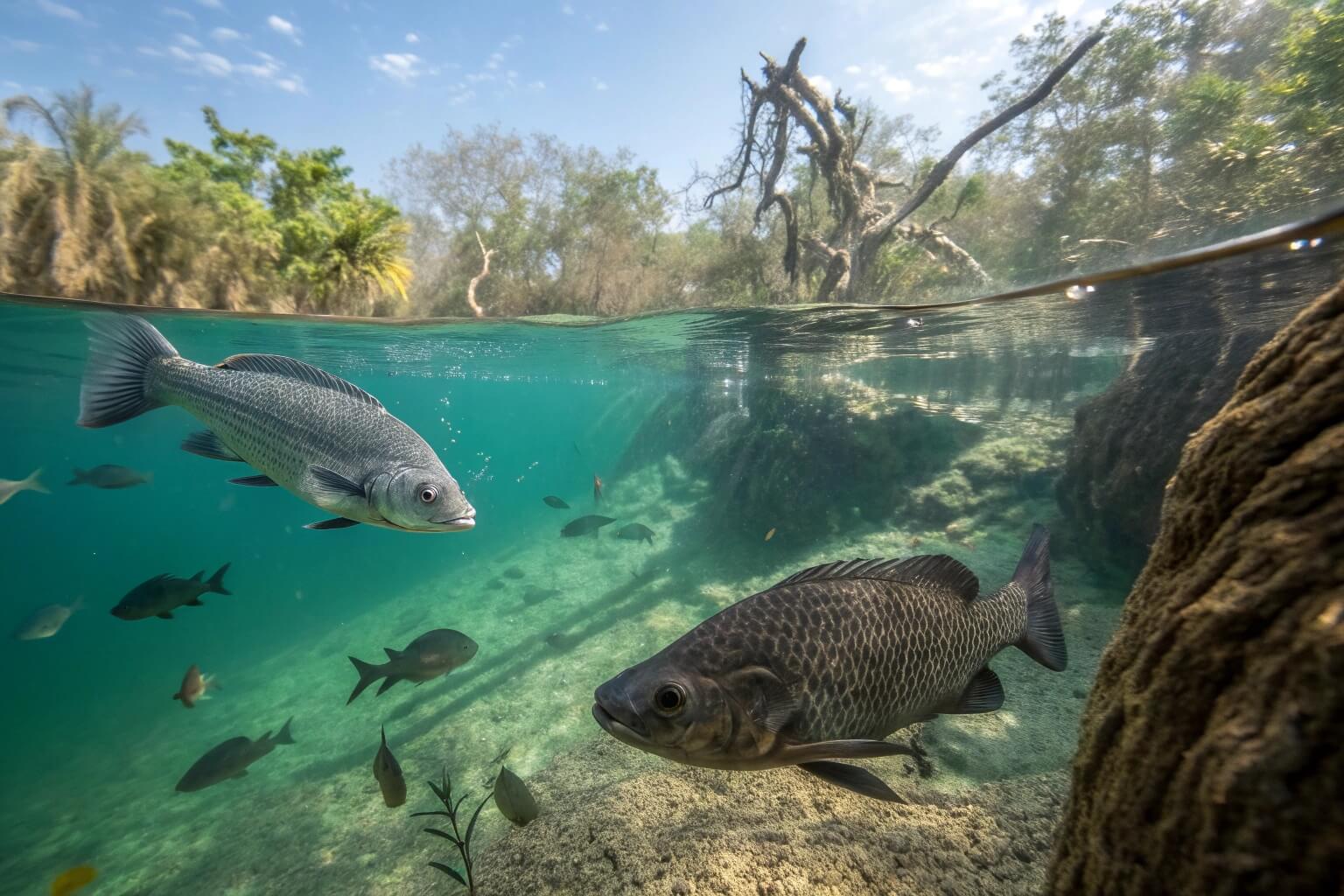How Much Money Do You Really Need to Start Fish Farming in Ghana?
Thinking about fish farming in Ghana? It's an exciting idea, but maybe you feel unsure about the startup costs and how to begin. Don't let uncertainty stop you.
Starting a small-scale fish farm in Ghana can range roughly from GHS 10,000 to GHS 50,000 or more. This depends heavily on your farm's size, the system you choose (like ponds or tanks), and if you need to buy land.

Getting the numbers right from the start is really important for success. Many hopeful farmers face challenges because they underestimate the investment needed. Let's break down the costs and look at other key things you must consider before diving into fish farming in Ghana. As someone working with Bancy Solutions, providing durable aquaculture tanks globally, I've seen many projects start, and careful planning always pays off.
How much do you need to start fish farming in Ghana?
Worried about the initial investment? Does starting a fish farm feel like a huge financial mountain to climb? It's a common concern, but let's break it down.
Your initial capital needs to cover essential items. Think about land preparation, building ponds or buying tanks (like the durable options we offer at Bancy), purchasing quality fingerlings, getting the first batch of feed, setting up a reliable water source, and buying basic equipment.

The exact amount varies a lot. Maybe you already have land, which saves a big chunk. Perhaps you're starting small with just one or two ponds. Or maybe you're planning a more intensive system using tanks. Let's dive deeper into what influences that starting figure.
Key Factors Influencing Startup Capital
Several things determine your starting budget. The biggest factors are usually the scale of your operation (how many fish you plan to raise), the type of system you choose (earthen ponds, concrete tanks, or specialized tanks), and land costs if applicable. Water source development is another big one – do you need to drill a borehole? How will you pump water? Then there are permits and licenses1, which vary by location. Finally, the quality of your initial inputs, especially fingerlings and feed, impacts both cost and future success. Don't forget basic tools like nets, buckets, and scales.
Earthen Ponds vs. Tank Systems
Earthen ponds are often seen as cheaper to construct initially, especially if you have suitable land and access to excavation equipment. However, they can require more land area per fish and managing water quality can sometimes be trickier. Tank systems, including concrete raceways or specialized tanks like our Bancy PVC collapsible tanks2 or Galvanized Steel tanks3, often require less land and allow for higher stocking densities and easier management. While the upfront cost per tank might seem higher, they can offer better control, potentially higher yields per square meter, and portability in the case of collapsible tanks. At Bancy, we offer various durable tanks like Galvanized Pipe Fish Tanks, Galvanized Sheet Fish Tanks, and Collapsible Plastic Fish Tanks, designed for different needs and scales, focusing on durability and ease of use.
Estimating Your Initial Needs (Small to Medium Scale)
Here's a very rough estimate to give you an idea. Remember, these are examples and actual costs in Ghana can vary significantly based on location, suppliers, and specific choices. Get local quotes!
| Item | Small Scale Estimate (e.g., 1-2 Ponds/Tanks) | Medium Scale Estimate (e.g., 3-5 Ponds/Tanks) | Notes |
|---|---|---|---|
| Land Prep / Pond Const. | GHS 2,000 - 10,000+ | GHS 5,000 - 25,000+ | Highly variable based on land/system type |
| Tanks (if applicable) | GHS 3,000 - 8,000+ | GHS 8,000 - 20,000+ | Depends on type, size, supplier (e.g., Bancy) |
| Fingerlings (e.g., 1000-5000) | GHS 500 - 2,500+ | GHS 1,500 - 6,000+ | Price per fingerling varies |
| Initial Feed (1-2 months) | GHS 2,000 - 5,000+ | GHS 5,000 - 12,000+ | Major ongoing cost, initial stock needed |
| Water Pump & Basic Setup | GHS 1,000 - 3,000+ | GHS 2,000 - 5,000+ | Essential for water changes/supply |
| Nets, Tools, Misc. | GHS 500 - 1,500+ | GHS 1,000 - 3,000+ | Harvesting nets, scales, buckets etc. |
| Permits/Contingency | GHS 500 - 2,000+ | GHS 1,000 - 4,000+ | Always budget for unexpected costs |
| Estimated Total Range | GHS 9,500 - 32,500+ | GHS 23,500 - 75,000+ | Highly illustrative estimates |
How much does it cost to start a fish farm?
Beyond just the initial cash outlay, what specific costs make up a fish farm budget? Feeling overwhelmed by the different expense categories and ongoing needs? Let's clarify.
Startup costs involve fixed assets like land improvements and pond/tank structures, plus initial variable costs like buying your first batch of fingerlings and feed. Crucially, you must also budget for ongoing operational costs which continue throughout the farming cycle.

Understanding the difference between one-time startup costs4 and recurring operational costs5 is vital for financial planning. Many businesses struggle not just because of the initial investment, but because they underestimate the money needed to keep things running until harvest and sales generate income. Let's look closer at these cost categories.
Fixed Costs Breakdown
Fixed costs are the initial, often one-time investments needed to get the physical farm infrastructure in place. If you don't own land, the purchase or long-term lease cost is a major fixed expense. Then comes land preparation: clearing, leveling, and potentially building access roads. Pond construction (excavation, dike building) or tank installation (concrete work, purchasing and setting up tanks like those from Bancy) is another core fixed cost. Developing a reliable water source – perhaps drilling a borehole, setting up rainwater harvesting, or installing piping from a nearby source – is essential. You might also need basic structures like a small shed for feed storage or security fencing. These costs don't typically recur frequently, forming the foundation of your farm.
Initial Variable Costs
These are costs directly tied to starting your very first batch of fish. The most significant are purchasing fingerlings (young fish) and the initial supply of fish feed6. The quality of fingerlings is critical for good growth and survival rates, so don't just go for the cheapest option. You'll need enough feed to last the first month or two before you establish a regular purchasing cycle. Other initial variable costs might include water testing kits, initial water treatment chemicals if needed, and transportation costs for getting fingerlings7 and feed to your farm site. These costs happen at the beginning of each production cycle, but the very first cycle requires upfront payment before any income is generated.
Ongoing Operational Costs
These are the recurring expenses needed to run the farm day-to-day and raise your fish to market size. By far, the biggest ongoing cost in most fish farms is feed. It can easily account for 50-70% or more of your total operational budget8. Labor costs (for feeding, cleaning, security, management) are another significant factor, unless you're doing everything yourself initially. Electricity or fuel for pumping water is a regular expense. Then there's maintenance for ponds, tanks, and equipment. You'll also need funds for periodic restocking of fingerlings after harvest, potential veterinary care or disease treatments, and miscellaneous supplies. Budgeting carefully for these is crucial for profitability.
| Cost Category | Description | Frequency | Estimated % of Operational Budget (Varies Greatly) |
|---|---|---|---|
| Fish Feed | Primary cost, needed daily | Daily/Weekly | 50-70%+ |
| Labor | Feeding, cleaning, security, management | Daily/Monthly | 10-25% |
| Electricity/Fuel | Pumping water, aeration (if used) | Monthly | 5-15% |
| Maintenance | Pond/tank repairs, equipment upkeep | Periodically | 3-10% |
| Fingerlings (Restock) | Buying new fish after harvest | Per Cycle | Varies, depends on cycle length |
| Health/Treatment | Medications, water quality management | As Needed | 1-5% |
| Miscellaneous | Tools, transport, communication, permits renewal | Periodically | 2-5% |
How much is 1kg of catfish in Ghana?
Okay, you've thought about the costs. Now, what about the potential returns? Is the market price for catfish attractive enough to make your fish farming venture profitable?
The farm gate price for 1kg of catfish in Ghana usually ranges from GHS 15 to GHS 25 or slightly more. However, this price isn't fixed; it changes based on your location, the time of year, the size of the fish, and overall market demand.

Knowing the potential selling price is just as important as knowing the costs. Remember that the price you get directly at your farm (farm gate price9) will likely be lower than the price consumers pay in the market (retail price). Understanding what drives these price changes helps you plan better.
Factors Affecting Catfish Prices
Several factors influence how much you can sell your catfish for. Location plays a big role; prices might be higher in major cities compared to rural areas, but transport costs also increase. Seasonality matters – during certain festivals or holidays, demand might spike, potentially increasing prices. Conversely, if many farms harvest simultaneously, prices might drop due to oversupply. The size of the fish10 is also key; often, larger fish command a higher price per kilogram. The quality (health, appearance) of your fish impacts buyer willingness to pay premium prices. Finally, who you sell to matters – wholesalers usually offer lower prices than selling directly to restaurants, retailers, or consumers.
Farm Gate vs. Retail Prices
It's crucial to understand the difference. The farm gate price11 is what buyers (like wholesalers or market traders) pay you directly at your farm. The retail price is what the end consumer pays in a market or shop. There's usually a significant markup between these two prices to cover transport, storage, potential spoilage, and profit for the intermediaries. While selling directly to consumers can fetch you a higher price per kilo, it also requires more effort in terms of marketing, logistics, and potentially processing (like smoking or drying), which adds to your costs and workload. Researching both farm gate and retail prices in your target market area is essential for realistic financial projections.
Importance of Market Research
Don't just assume a price. Before you even start, research your local market. Talk to existing fish farmers, visit markets, speak with fish sellers (market queens), restaurants, and hotels. Find out what prices they are currently paying and selling at. Understand the preferred fish sizes and types (fresh, smoked, dried). This research helps you estimate potential revenue more accurately and identify the best channels to sell your fish. Market knowledge helps you navigate price fluctuations12.
| Factor | Impact on Price | How to Manage |
|---|---|---|
| Seasonality | Prices can fluctuate (e.g., holidays) | Plan harvest times strategically if possible |
| Location | Urban prices often higher, rural lower | Factor in transport costs vs. potential price gains |
| Fish Size | Larger fish may fetch higher price per kg | Target size based on market preference |
| Buyer Type | Wholesalers < Retailers < Direct Consumers | Explore different sales channels, weigh pros/cons |
| Quality | Healthy, well-formed fish command better prices | Focus on good feeding and pond management |
| Market Supply | High supply can lower prices | Network with other farmers, consider staggering harvests |
What is the best fish to farm in Ghana?
Choosing the right fish species is absolutely critical for success. Are you unsure which species grows well, survives well, and has strong market demand in Ghana's specific conditions?
Tilapia and Catfish (specifically the African Catfish, Clarias gariepinus) are the most popular fish farmed in Ghana. They are generally considered the best choices, especially for beginners, because they are hardy, grow relatively fast, and are widely accepted by consumers.

While other fish can be farmed, focusing on Tilapia13 or Catfish significantly increases your chances of success due to established knowledge, available inputs (like fingerlings and feed), and ready markets. Let's look at why they dominate and compare them.
Why Tilapia and Catfish Dominate
There are good reasons why these two species are the mainstay of Ghanaian aquaculture14. Both Tilapia (especially Oreochromis niloticus) and African Catfish15 (Clarias gariepinus) are native or well-adapted to the region's climate and water conditions. They are relatively tolerant of varying water quality and can be grown in different systems, from simple earthen ponds to more intensive tank cultures. Importantly, there's strong existing consumer demand for both fish across Ghana. Furthermore, research and extension services often focus on these species, meaning there's more information available on how to raise them successfully compared to less common species. Finding quality fingerlings and specialized feed is also generally easier for Tilapia and Catfish.
Comparing Tilapia vs. Catfish for Farming
While both are good choices, they have slightly different characteristics that might make one more suitable for your specific situation or goals.
| Factor | Tilapia (Oreochromis niloticus) | Catfish (Clarias gariepinus) | Notes |
|---|---|---|---|
| Growth Rate | Generally good, market size in 6-9 months. | Very fast, can reach market size in 5-7 months. | Catfish often grows faster. |
| Feed Conversion Ratio16 | Good (around 1.5-2.0:1). | Also good, potentially slightly better (around 1.0-1.8:1). | Both convert feed efficiently if managed well. |
| Market Demand17 | Very High. Widely consumed across Ghana. | Very High. Particularly popular for smoking and soups. | Both have excellent market acceptance. |
| Tolerance (Water/Density) | Tolerant, but needs good oxygen. Can breed in ponds. | Extremely hardy, tolerates low oxygen, high density. | Catfish is generally hardier and easier for beginners. |
| Technical Difficulty18 | Moderate. Need to manage breeding if in ponds. | Relatively low. Cannibalistic if sizes vary greatly. | Catfish might be slightly simpler to manage initially. |
| Seed (Fingerling) Availability | Generally good from reputable hatcheries. | Generally good, sometimes more readily available. | Access to quality seed is key for both. |
| Diet | Omnivore, feeds lower in the food chain (pellets, algae). | Carnivore/Omnivore, requires higher protein feed pellets. | Catfish feed can sometimes be slightly more expensive. |
As highlighted in my insights earlier, securing a reliable source of high-quality fingerlings is a challenge sometimes. Make sure you source from reputable hatcheries for either species.
Considering Other Species?
While Tilapia and Catfish are dominant, some farmers explore other options like Heterotis (similar to Tilapia) or even snakehead murrel (Channa species), depending on niche market demands or specific site conditions. However, for most new entrants into Ghanaian fish farming, starting with either Tilapia or African Catfish is the most recommended path due to the factors mentioned above: established practices, available inputs, and strong market demand. Master these first before considering diversification.
Conclusion
Starting a fish farm in Ghana holds promise, but it definitely requires careful planning, realistic budgeting, and hard work. Understanding the potential costs, market prices, and choosing the right fish are absolutely essential first steps for success.
-
Navigating permits and licenses is essential for legal compliance in aquaculture. Learn about the requirements in your area. ↩
-
Explore the advantages of Bancy PVC collapsible tanks, including portability and ease of use, perfect for efficient fish farming. ↩
-
Learn about the durability and efficiency of Galvanized Steel tanks in fish farming, ensuring better yields and management. ↩
-
Understanding one-time startup costs is crucial for effective financial planning and ensuring your business is set up for success. ↩
-
Exploring recurring operational costs helps businesses budget effectively and maintain financial health over time. ↩
-
Optimizing fish feed costs can significantly impact your farm's profitability, making it a crucial area to explore. ↩
-
Understanding how to choose quality fingerlings is essential for ensuring the success of your fish farming venture. ↩
-
Learning about the components of an operational budget can help you manage your fish farm finances effectively. ↩
-
Understanding the difference between farm gate and retail prices can help you strategize your selling approach effectively. ↩
-
Learning how fish size impacts pricing can help you optimize your production for maximum profit. ↩
-
Understanding farm gate prices is essential for farmers to maximize profits and make informed selling decisions. ↩
-
Learning about price fluctuations helps farmers anticipate market changes and adjust their strategies accordingly for better profitability. ↩
-
Explore the advantages of Tilapia farming, including its adaptability and market demand, to enhance your aquaculture success. ↩
-
Learn about the latest trends in Ghanaian aquaculture to understand market dynamics and opportunities for growth. ↩
-
Discover why African Catfish is a preferred choice in aquaculture, focusing on its resilience and consumer demand. ↩
-
Understanding the feed conversion ratio is crucial for optimizing fish farming efficiency and profitability. Explore this link for detailed insights. ↩
-
Knowing the market demand helps in making informed decisions about which fish to farm. This link provides valuable market insights. ↩
-
Assessing the technical difficulty can guide new farmers in choosing the right species to start with. Check this link for expert advice. ↩